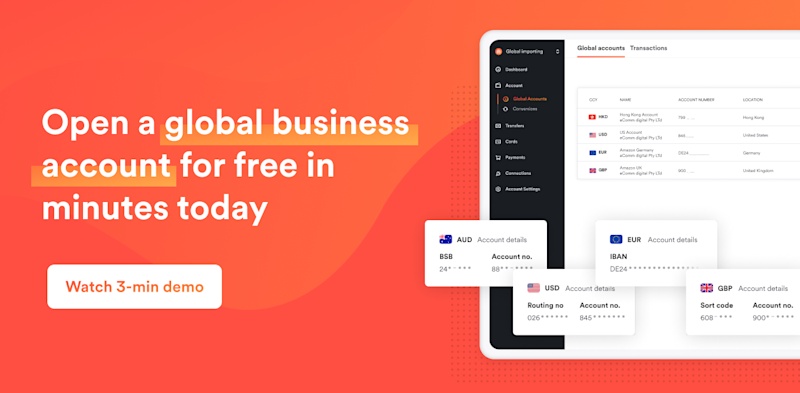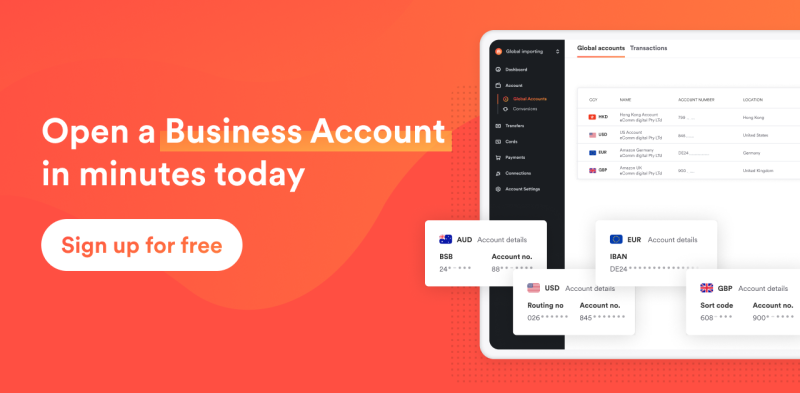“Buy Now, Pay Later” for Hong Kong eCommerce: benefits, risks and integration methods

Kirstie Lau
Brand Content Marketing Manager
What is Buy Now, Pay Later (BNPL)?
“Buy Now, Pay Later” (BNPL) is a kind of payment method that allows consumers to defer payments by paying in instalments. BNPL transactions do not require using of credit cards, meaning consumers can enjoy deferred payments without the hassle of providing proof of income or credit records to financial institutions.
Global “Buy Now, Pay Later” trends
“Buy Now, Pay Later” has become increasingly popular in Europe and the United States, as well as around the globe in recent years. According to a survey conducted by Global Data in July 2024, China, Germany, India, Japan, the United Kingdom and the United States were the major markets for BNPL services in 2023, with transaction volumes reaching over 100 million. The estimated gross merchandise value (GMV) was about US$349.4 billion in the same year. It is expected to record a compound annual growth rate above 19% between 2023 and 2028.
Meanwhile, BNPL has also become a commonly used payment method in the Asia-Pacific region. It is expected to account for 7.7% of eCommerce payments in the area.
How does “Buy Now, Pay Later” work?
The mechanism of “Buy Now, Pay Later” is very simple. When a consumer shops, he/she has to pay for the “first instalment”, usually about one-third of the bill amount. The selected BNPL platform will pay the remaining amount which shall be repaid by the consumer in instalments later.
BNPL platforms generally gain profits by charging fines for late payments from consumers, while some also have profit-sharing agreements with eCommerce shops to earn a certain percentage of revenue from each transaction.
“Buy Now, Pay Later” vs. credit card instalment payments
“Buy Now, Pay Later” and credit card instalment payments both share the function that allows consumers to “spend money not yet earned”, below is a table that compares both payment methods:
| “Buy Now, Pay Later” (BNPL) | Credit card installment payments |
|---|---|---|
Service provider | BNPL platform | Card issuing bank |
Instalment period | Shorter, generally in 3 instalments | Longer, up to 60 instalments |
Interest | Interest free | Depending on the selected bank, some banks offer a 3-month interest-free instalment |
Fees | Lower late payment penalty fees | Higher late payment penalty fees |
Transaction amount | Suitable for small amount transactions | Depending on credit limit, the transaction limit is generally higher than BNPL platforms |
Impact on personal credit | Applicants’ credit records will not be checked. But failure to repay on time due to linked credit card may affect the credit rating | Banks check applicant credit reports when approving credit card applications, repayment progress for installments affects credit rating |
We can see from the above comparison that both options have their pros and cons. BNPL platforms usually have shorter instalment periods and lower transaction limits than credit card instalments. However, consumers do not have to go through credit report screenings to apply for BNPL instalments, making it more flexible to use than credit card instalment payments.

Advantages and risks of using “Buy Now, Pay Later”
While both “Buy Now, Pay Later” and credit card instalment payments have their benefits, it’s always beneficial for eCommerce to offer customers more options beyond traditional payment methods.
Below are the advantages of providing BNPL payment methods:
1. Expand your customer base: People who cannot provide concrete income proof, such as freelancers, housewives and students without a fixed income, often face challenges in obtaining credit credit cards and enjoying deferred payment benefits. Offering the “Buy Now, Pay Later” option would help your business to attract this group of customers.
2. Increase sales revenue: BNPL platforms generally do not charge any interest as long as customers make payments on time. Such a painless payment method allows customers to buy their desired goods immediately without the pressure of paying a large sum upfront, and hence, can attract more customers to make purchases.
3. Increase conversion rates: Although BNPL platforms do not check credit reports, users still have to make an official application on the platform. Some payment gateways support convenient integration methods, such as Airwallex, a one-stop financial and remittance platform. Once integrated, online shops can offer the “Buy Now, Pay Later” option on their checkout pages to ensure a smooth payment experience so as to boost conversion rates.
It is important to note that there are also risks when using “Buy Now, Pay Later” - After consumers make a purchase and check out, “Buy Now, Pay Later” service providers must first pay the purchase amount to the e-commerce store, and they may have to bear the risk of insufficient cash flow before the remaining amount is repaid by the customer. However, the repayment ability of the consumer cannot be assessed as no credit history reviews are required. If the customer cannot repay at last, BNPL service providers must bear the consequences of bad debts. But fortunately, the risks are not borne by the merchants, hence, e-commerce merchants can still directly enjoy the benefits of “Buy Now, Pay Later”, including attracting a broader customer base and offering convenience to customers.
Is “Buy Now, Pay Later” suitable for my eCommerce business?
According to a survey conducted by Qualtrics on behalf of Credit Karma in 2021, the respondents purchase a wide range of goods, using “Buy Now, Pay Later”:
Home and furniture items: 42%
Electrical appliances (earphones, speakers, vacuum cleaners): 30%
Clothing (Clothes, shoes etc): 24%
Accessories (Jewellery, watches, handbags): 14%
Beauty and health products (Cosmetics, skincare products, fragrances): 12%
Gym equipment: 12%
Hotel or accommodation: 10%
Luxury goods: 10%
Travel supplies (luggage, camping gear, backpacks): 8%
Music concerts or music festivals: 6%
Flight tickets: 5%
According to another survey conducted jointly by Airwallex and the global strategy consulting firm Edgar, Dunn & Company in January 2024, among 3,000 interviewed consumers from Australia, Hong Kong, China, Singapore, the United Kingdom and the United States, 77% said they are highly likely/ likely to abandon their shopping carts if a merchant cannot offer their preferred payment method. Therefore, providing customers with their desired payment method, such as “Buy Now, Pay Later” would be the key to driving up sales.

How can I choose the right “Buy Now, Pay Later” platform for my eCommerce business?
To select a BNPL platform, first, you’ll have to understand the services they provide.
Klarna, Afterpay and Paypal are all trending “Buy Now, Pay Later” service providers in overseas markets. Atome withdrew from Hong Kong in May 2023 only after entering the city less than three years ago. eCommerce can accept Klarna and Afterpay payment by integrating individual payment gateways, such as Airwallex.
Comparison of common “Buy Now, Pay Later” providers
Below are a few common BNPL platforms on the market:
| |||
|---|---|---|---|
Installments | 3 or 4 instalments, depending on the region, payment every 2 weeks | 4 instalments, payment every 2 weeks | 4 instalments, payment every 2 weeks |
Spending limits | “Purchase Power” amount increases with a good payment history | Starts at US$600, the amount increases with a credit history | US$30-1,500 |
Late payment penalty fees | Vary from US$0 to US$24, depending on the transaction amount | For bills below US$40: a one-off fee of 25%; for bills above US$40: a late fee of US$10, additional US$7 if not paid after 7 days with a cap at US$68 | None |
APR | 0% | 0% | 0% |
*Individual platforms provide higher spending limits with longer repayment periods, along with interest charges. For more details, please refer to the corresponding official websites. Information was retrieved as of Aug 2024. Information provided is for reference only.
How can I connect the “Buy Now, Pay Later” payment method to my eCommerce shop?
eCommerce shops can offer customers with this payment method through specific payment gateways. No coding knowledge is required.
Create a business account on Airwallex online for free. You can easily open an account by uploading business proof documents within minutes. Simply integrate our plugins to accept over 60 local payment methods, including credit cards, FPS, AlipayHK and WeChat Pay, as well as BNPL payment methods such as Klarna and Afterpay.
How does Airwallex boost your conversion rates through “Buy Now, Pay Later”?
Airwallex provides financial solutions for eCommerce. Online shops can offer customers the “Buy Now, Pay Later” payment options through simple integration so as to boost conversion rates.
If you're a Shopify or WooCommerce eCommerce seller, Airwallex provides a unique Klarna checkout experience with a standalone application. This allows Klarna to appear prominently on the checkout page and could potentially help increase conversion rates.
With like-for-like settlement for 11+ major currencies, your funds will be settled directly into your account in the same currency that your customers used to make the payment. That means no extra FX fees and hidden fees incurred.
Case study: Grams(28) stimulates sales growth by offering BNPL
Grams(28), an eCommerce shop founded in 2019, specializes in high-quality Italian leather goods. Positioned as a luxury brand, they sell products with higher marked prices. Therefore, they aim to stimulate conversion by offering the “Buy Now, Pay Later” payment method so that customers can receive the product first after paying a small deposit.
It only took one week for Grams(28)’s eCommerce platform to connect with Airwallex’s plugin. Purchases made with “Buy Now, Pay Later” quickly accounted for 20% of Grams(28)’s total sales revenue since the completion of integration.

Frequently asked questions
For customers using “Buy Now, Pay Later”, do they have to pay a higher amount than the original price?
Generally, no interests are involved for “Buy Now, Pay Later” purchases. A fine will only be charged if there is a delay in repayment.
However, some other BNPL platforms that offer high consumption limits may allow customers to split payments into more installments and longer repayment periods, which involve interests. Please refer to the official websites of the corresponding platforms for more details.
How do “Buy Now, Pay Later” platforms earn profits?
Profits mainly come from processing fees that are charged on merchants. These apps usually charge higher fees than non-BNPL processors given the extra capability. Some have profit-sharing agreements with eCommerce shops to earn a certain percentage of revenue from each transaction. BNPL platforms may also gain profits by charging fines for late payments from consumers.

*Information on Klarna, Afterpay and PayPal was retrieved as of Aug 2024. Information provided is for reference only. Please refer to the official website for the most up-to-date details
Disclaimer: The information was based on our own online research and we were not able to manually test each tool or provider. The information is provided for educational purposes only and a reader should consider the specific requirements of their business when evaluating providers. This research is reviewed every 6 months. If you would like to request an update, feel free to contact us at [email protected].
View this article in another region:Hong Kong SAR - 繁體中文

Kirstie Lau
Brand Content Marketing Manager
Kirstie Lau is a fintech writer at Airwallex, and has built up a wealth of knowledge in financial operations systems. In her day-to-day, she dedicates herself to crafting content that fits the unique needs of businesses seeking financial operations solutions. Kirstie’s background in analytics and product marketing gives her a unique perspective on guiding businesses through the complex world of payments.
Posted in:
Online paymentsShare
- What is Buy Now, Pay Later (BNPL)?
- Global “Buy Now, Pay Later” trends
- How does “Buy Now, Pay Later” work?
- “Buy Now, Pay Later” vs. credit card instalment payments
- Advantages and risks of using “Buy Now, Pay Later”
- Is “Buy Now, Pay Later” suitable for my eCommerce business?
- How can I choose the right “Buy Now, Pay Later” platform for my eCommerce business?
- Comparison of common “Buy Now, Pay Later” providers
- How can I connect the “Buy Now, Pay Later” payment method to my eCommerce shop?
- How does Airwallex boost your conversion rates through “Buy Now, Pay Later”?
- Frequently asked questions


